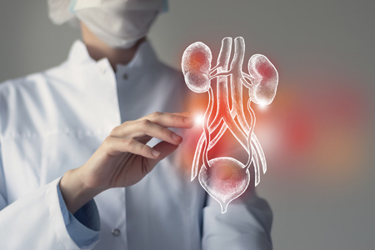AAV Gene Therapy Takes On Kidney Disease

By Matthew Pillar, Editor, Bioprocess Online

Some 37 million U.S. adults are living with chronic kidney disease. Global prevalence is more than 840 million. Yet over the past several decades, little therapeutic progress has been made, leaving patients with high burden and invasive treatment options including dialysis and transplant. However, one promising avenue of exploration is gene therapy for kidney disease. Gene therapy offers the potential to address the underlying genetic causes of kidney disease and provide more targeted and effective treatments.
UK-based Purespring Therapeutics set out to change that paradigm when it launched in 2020 and is focused on developing gene therapy for kidney disease, but the scientific foundation on which the company was formed has been taking shape for more than two decades. Prof. Moin Saleem began studying podocytes—epithelial cells that cover the outer surfaces of the glomerular capillaries critical to the kidney’s filtration function—more than two decades ago in his academic work at the University of Bristol. At the time, his work was considered a bit on the fringe. “Everyone thought he was mad,” says Richard Francis, CEO at Purespring and a recent guest on episode 95 of the Business of Biotech podcast. “And today, there are conferences dedicated to the study of podocytes and the understanding of their role in cellular-level kidney function.”
Translating Cell-Level Kidney Research Into The Therapeutic Arena

Beyond his academic research chops, Prof. Saleem is a clinician, a pediatric nephrologist, to be specific, who achieved significant milestones in the field of gene therapy for kidney disease, and Francis says Saleem’s enthusiastic drive to translate his research into viable treatments for patients was central to his decision to join the company in 2021. “He’s desperate to create products that help patients, and that's the type of partner that I wanted to have,” says Francis.
Prof. Saleem’s work has shown preclinical promise. His in vitro work and animal models replicating kidney disease in humans are well-recognized. He developed the first human podocyte cell lines, now used in research laboratories around the world. Ultimately, he achieved a breakthrough by curing monogenic kidney disease in mice using kidney gene therapy, an accomplishment that had not been achieved before.
Finding the Perfect Trio: Purespring's Journey of Gene Therapy for kidney disease: Francis, who previously served as Division Head & CEO at Sandoz and President and SVP at Biogen during his nearly 20 years in big bio, had been looking for an early-stage opportunity when he met Prof. Saleem. He had three criteria for the company he’d lead: great science, a platform that would accommodate the development of multiple assets, and financiers willing to take a company to the commercial finish line. “I spent a bout a year talking to many biopharma leaders and venture capitalists, and I frequently found one of those things, often two of them, but never all three until I learned of Purespring,” he says.
Populating A Platform Around The Podocyte
The science is well-stated. The funding came to the tune of a $62 million series A led by Syncona last summer. The platform revolves around the podocyte, the function of which, says Francis, is central to more than 60 percent of kidney diseases. By targeting the podocyte, the researchers aim to address multiple kidney disease indications using AAV kidney gene therapy. “The platform gives us an opportunity to address multiple kidney disease indications by targeting one cell. That’s exciting in AAV gene therapy, because all the important capsid and promoter development work will be reproducible from one program to the next. The one thing we’re hoping to change from one indication to the next is the gene of interest we insert,” he says.
The platform model creates the potential to shrink timelines, reduce regulatory risk, and minimize cost—three key challenges in the AAV gene therapy arena. The company is also pursuing a differentiator in a unique route of administration—direct to the kidney—which Francis says promises to require lower (thereby less costly) doses and address some of the toxicity issues that have beleaguered the clinical trials in the space. By targeting the kidney using gene therapy, the company aims to provide a more effective and targeted treatment approach for kidney diseases.
Tune in to the Business of Biotech episode 95 for Francis’ take on the CMC and manufacturing strategies Purespring is building, particularly in the context of kidney gene therapy, with the intent to take its candidates all the way to the commercial finish line.
